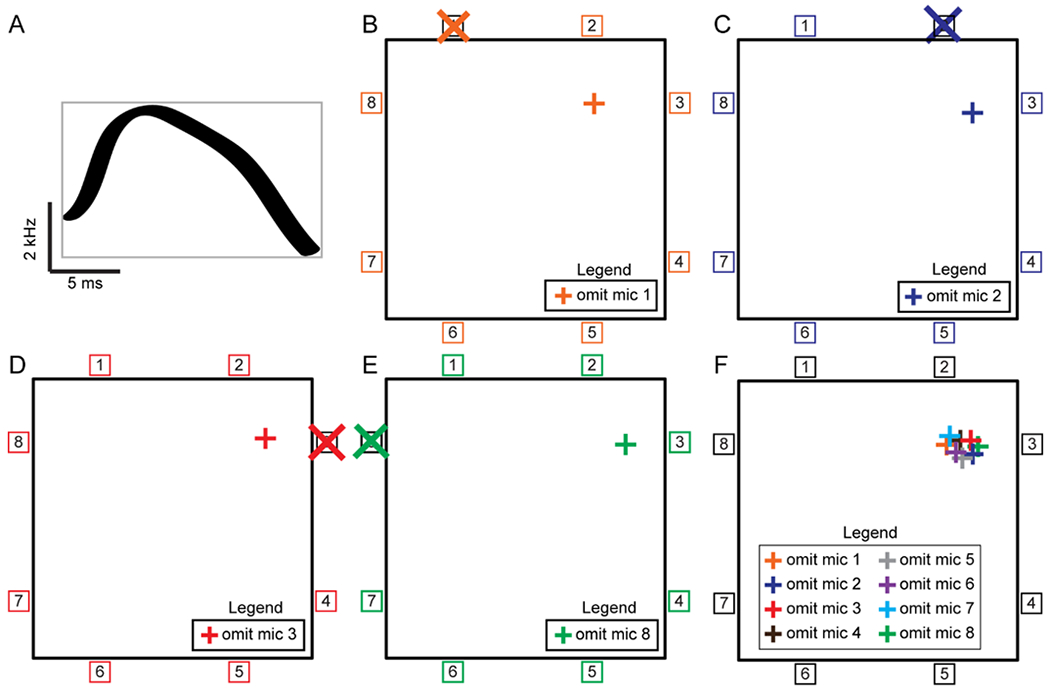Figure 3. Jackknife schematic.

A-F, The Jackknife approach of sound source localization implemented a statistical resampling strategy that systematically excluded one of the microphones and used all remaining microphones to estimate the sound source. Each microphone was omitted once, leaving as many point estimates as there were microphones. All further steps were identical to the Snippets approach described in Neunuebel et al. (2015) and METHODS. The schematic shows the Jackknife approach applied to audio data collected with an 8-channel microphone array. A, The entire duration and full frequency range of the hypothetical vocal signal was used to estimate the location (gray box). B, Point estimate calculated by excluding microphone 1. C, Point estimate calculated by excluding microphone 2. D, Point estimate calculated by excluding microphone 3. E, Point estimate calculated by excluding microphone 8. F, Combination of 8 point estimates. Cartoons showing point estimates calculated by omitting microphones 4-7 are not shown.
